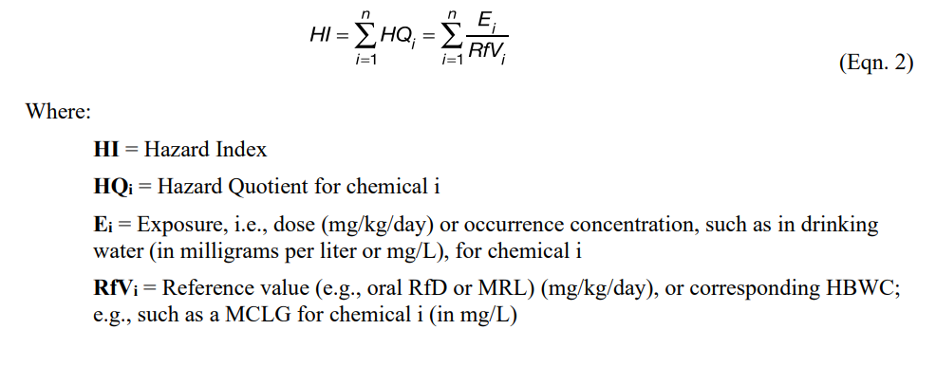BCLPemerging.com
PFAS Update: Proposed Federal Drinking Water Limits - EPA Goes Below and Beyond
Mar 20, 2023Summary
Last week, EPA issued its long-anticipated proposal for Maximum Contaminant Levels (“MCLs”) for certain PFAS compounds which, once finalized, will establish national limits for those compounds in drinking water. EPA has been working on the proposed MCLs for years, so their release is no surprise. However, there are three key features that are remarkable: (1) the MCLs for PFOA and PFOS are below the limits set by various states; (2) EPA went beyond PFOA and PFOS, and has included MCLs for four other PFAS compounds in the proposal; and (3) EPA has set non-enforceable Maximum Concentration Level Goals at zero for PFOA and PFOS.
Below: EPA Proposes Lowest-in-the-Nation Limits for PFOA and PFOS
The proposed rule sets out the following MCLs and health-based Maximum Contaminant Level Goals (“MCLGs”) for the six compounds:
| Compound | Proposed MCLG | Proposed MCL (enforceable levels) |
|
PFOA |
Zero |
4.0 parts per trillion (also expressed as ng/L) |
|
PFOS |
Zero |
4.0 ppt |
|
PFNA |
1.0 (unitless) Hazard Index |
1.0 (unitless) Hazard Index |
|
PFHxS |
||
|
PFBS |
||
|
HFPO-DA (commonly referred to as GenX Chemicals) |
Although certain states had previously implemented single-digit MCLs for PFOA and PFOS, none are as low as EPA’s 4 ppt standard.
However, these low limits are not entirely surprising, given EPA’s prior adjustment to its Health Advisories for these compounds. On June 15, 2022, EPA issued four proposed health advisories (“HAs"):
| PFAS Substance | Concentration |
|
PFOA (Perfluorooctanoic acid) |
0.004 ppt (or 4 parts per quadrillion) |
|
PFOS (Perfluorooctane sulfonate) |
0.02 ppt |
|
Gen X Chemicals (HFPO-DA) |
10 ppt |
|
PFBS (Perfluorobutane sulfonate) |
2,000 ppt |
These HAs for PFOA and PFOS replaced and dramatically reduce EPA’s 2016 Drinking Water Health Advisory Level of 70 ppt for PFOA and PFOS.
We anticipate significant public comment on these very low limits, given the burden that it will place on drinking water systems across the country, especially in light of recent findings from the EU and WHO indicating that much higher concentrations of these compounds are adequately protective of human health.
Beyond: EPA Included Four PFAS Compounds in Addition to PFOA and PFOS
Until very recently EPA had indicated that it would propose MCLs for PFOA and PFOS, which is consistent with its overall approach to PFAS regulation. For example, EPA is planning on listing PFOA and PFOS as hazardous substances under CERCLA later this year. But in an unexpected move, the agency has added four additional PFAS substances to the proposed rule. These four compounds have been the subject of regulatory attention at both the state and federal levels, with some states issuing MCLs for these compounds and EPA conducting health studies. However, EPA only recently signaled that it would add these compounds to the proposed rule.
The fact that EPA has included these compounds in the rule is noteworthy, but the way that the agency set the limit for the compounds is also significant. The MCLs for PFOA and PFOS are very straightforward; the rule sets a limit of 4 ppt for each. However, for the other four compounds, EPA has set a combined Hazard Index limit of 1. EPA took this approach based on its conclusion that PFAS compounds are often commingled which can result in an additive health impact. Unfortunately, EPA's equation for calculating the HI from any given sample is quite complicated.

Practically speaking, this means that drinking water systems will need to calculate a Hazard Quotient for each chemical in a sample, and if the total of those values is greater than 1.0, then the sample exceeds the MCL. Where things get tricky is that the Hazard Quotient is calculated using the concentration (or dose) of the PFAS chemical in the sample divided by an established risk factor, so the Hazard Quotient for each PFAS compound will vary from sample to sample.
While the HI approach is a standard method for addressing mixtures of related chemicals, it presents significant challenges for drinking water systems. First, the calculation of the HI is complicated and variable and will add to testing costs, which drinking water systems have already signalled they are unable to cover in their budgets. Second, the HI value, on its face, does not provide any information about the concentrations of individual PFAS compounds in the sample or how they should be controlled to bring the water source into compliance with the MCL. While this provides some flexibility in the remedial solutions that a system can employ, it creates a risk that the required solutions may change over time, making compliance – and the capital expenditures needed to achieve it – a moving target.
EPA’s Proposed Maximum Concentration Level Goals Are Zero for PFOA and PFOS
In addition to the MCLs, EPA is proposing Maximum Concentration Level Goals (“MCLGs”) for all six of the compounds. As EPA explains in their proposed rule MCLGs are set at “the level at which no known or anticipated adverse effects on the health of persons occur and which allows an adequate margin of safety.” However, it is critical to note that while MCLs are enforceable compliance standards, MCLGs are purely advisory and do not impact drinking water systems’ compliance obligations.
For PFOA and PFOS, EPA has set the MCLGs at zero – the same MCLG for other contaminants such as arsenic, lead, legionella, PCBs, and uranium - clearly signalling what EPA’s position is on the potential toxicity of these PFAS compounds. Many have expected a MCLG along these lines ever since EPA issued a HA level for PFOA in the parts-per-quadrillion range last year, and EPA’s conclusions appear to be a stark refutation of the conclusions reached by the EU and WHO, both of which concluded that much higher levels of PFOA and PFOS were adequately protective of human health. The introduction of MCLGs for the four additional PFAS compounds was once again a surprise, and interestingly, the MCLGs for these compounds is the same as the MCL: a Hazard Index value of 1. Again, the MCLGs are not a regulatory standard, but they do provide an insight into EPA’s understanding of the different health risks posed by these six PFAS compounds.
How Do These Limits Impact Businesses?
MCLs set the maximum concentration of a given contaminant that can be present in drinking water. Drinking water systems are ultimately responsible for meeting the applicable MCLs and are required to ensure that drinking water distributed to the public meets these limits. State agencies often include limits for discharges to drinking water sources to ensure that the drinking water provider can comply with the MCLs, which means that industrial dischargers across the country may start seeing PFAS limits in their NPDES permits as a result of the new standards.
In addition, several drinking water systems have filed suits against upstream industrial and municipal dischargers seeking to recover the cost of filtration systems that they argue they must install to address PFAS compounds. As noted above, drinking water systems have raised concerns about their ability to pay for the testing needed to monitor for ongoing compliance, so the cost of installing multi-million dollar filtration systems may similarly be outside of their budgets, and these types of lawsuits may be seen as a way to obtain those funds. The obvious impact on industry is the potential for litigation risk based on current and historic PFAS discharges to water that is eventually used for drinking water.
Conclusion
In some ways, the issuance of MCLs for these six compounds is beneficial to impacted industries because it provides regulatory certainty across the entire US, rather than the current patchwork of state regulations. However, the cost and complexity of compliance is expected to have ripple effects across drinking water systems and industrial dischargers that will likely take years to resolve.
For more information on PFAS chemicals, and the regulatory and liability risks that they pose, please visit our PFAS webpage. If you have a question about how to manage PFAS risk in any jurisdiction, contact Tom Lee, John Kindschuh, Emma Cormier, or any other member of our PFAS team at Bryan Cave Leighton Paisner LLP.
Related Practice Areas
-
PFAS Team
-
Environment






